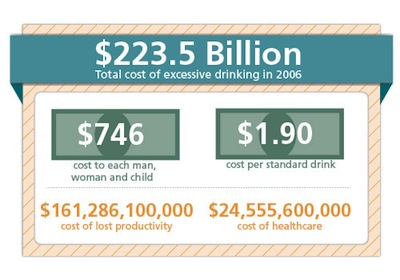When thinking about excessive alcohol consumption most people picture the typical adverse effects such as slowed reaction times, poor decision making and even liver problems. But what are the hidden costs of excessive alcohol consumption and can it have a lasting effect on health or even your pocketbook?
A study released in 2012 by the Centers for Disease Control found that the economic cost of excessive alcohol consumption was $223.5 billion in 2006. These numbers included losses in workplace productivity and healthcare expenses, as well as law enforcement and criminal justice costs.
In addition to the economic impacts, excessive alcohol consumption and misuse has lasting health impacts. A review published in the journal Cortex discusses how alcohol misuse in young people can lead to deficits in visual learning and memory. While older adults may see an increase in blood pressure, damage to the pancreas or heart disease.
Michael M. Miller, MD, FASAM, FAPA, Medical Director at the Herrington Recovery Center, stresses that people need to have access to treatment for this condition, as easily as they have access to treatment for heart disease or cancer. In addition, the ready availability of psychiatric consultation and concurrent treatment of mental health concerns, as is found at Rogers offers the opportunity to address broader aspects of a person’s condition. By continuing to embrace and enhance the existing treatment framework, addiction can move into remission, and the economic and health impacts can be greatly reduced.
1. Daniel F. Hermens, Jim Lagopoulos, Juliette Tobias-Webb, Tamara De Regt, Glenys Dore, Lisa Juckes, Noeline Latt, Ian B. Hickie. Pathways to alcohol-induced brain impairment in young people: A review. Cortex, 2013; 49 (1): 3 DOI: 10.1016/j.cortex.2012.05.021
2. Economic Costs of Excessive Alcohol Consumption in the U.S., 2006 Ellen E. Bouchery, Henrick J. Harwood, Jeffrey J. Sacks, Carol J. Simon, Robert D. Brewer American journal of preventive medicine 1 November 2011 (volume 41 issue 5 Pages 516-524 DOI: 10.1016/j.amepre.2011.06.045)


